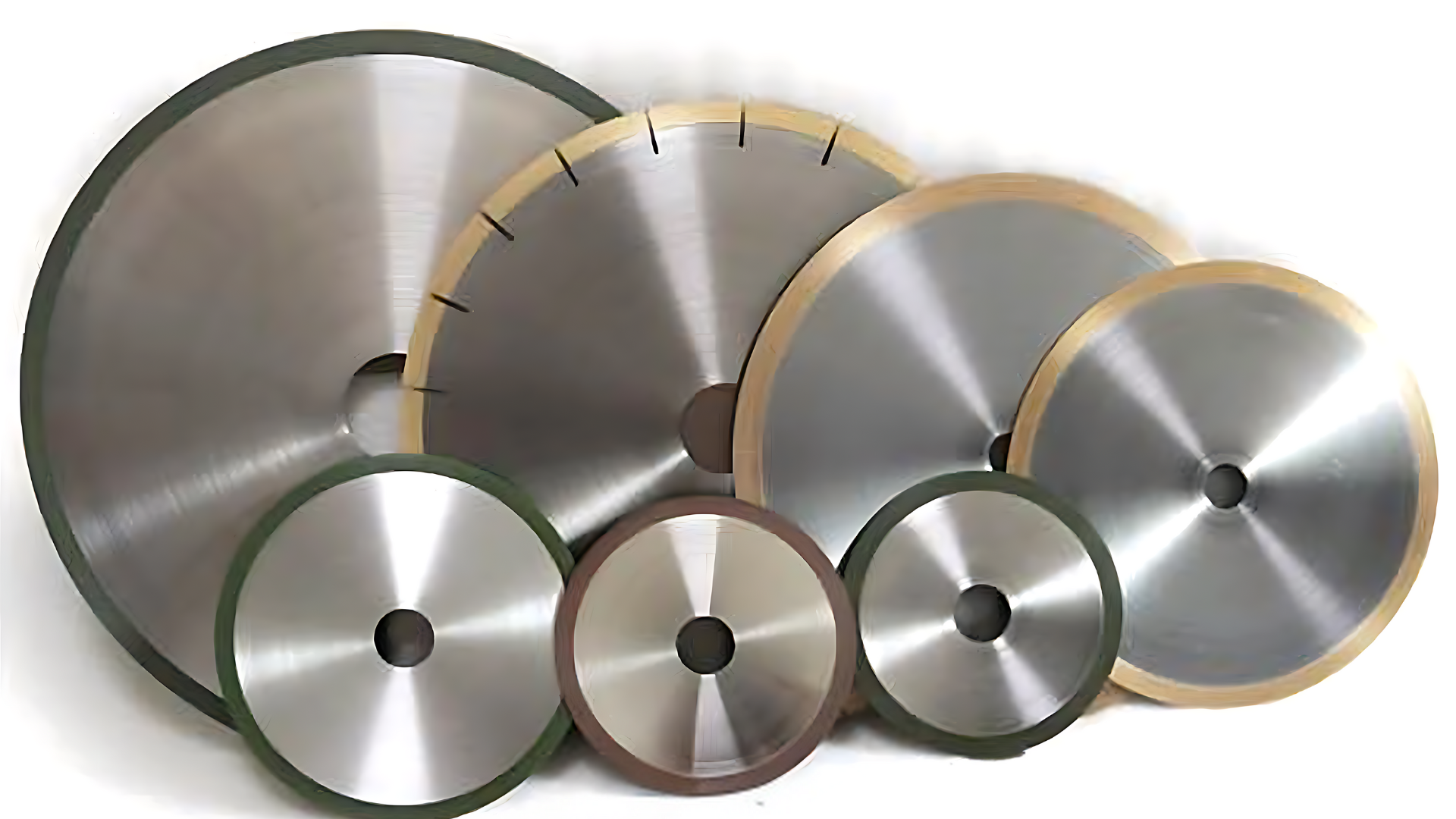Choosing the right cutting wheel is important for ensuring efficiency in various applications. Not only this, choosing the right wheel also helps with precision. Diamond wheels are perfect for hard materials like glass and stone. So, CBN (Cubic Boron Nitride) wheels are great for cutting ferrous metals. Understanding these differences helps in selecting a wheel and optimising performance. Apart from these, it also helps to extend the wheel’s lifespan. Thus, this blog post explores the key factors to consider when choosing a cutting wheel.
1. Diamond Cutting Wheels
A diamond cutting wheel is famous for its unparalleled hardness. Also, it's an important tool in cutting hard materials. Diamond is the hardest known material. Thus, it's useful in the wheels for exceptional cutting efficiency and precision.
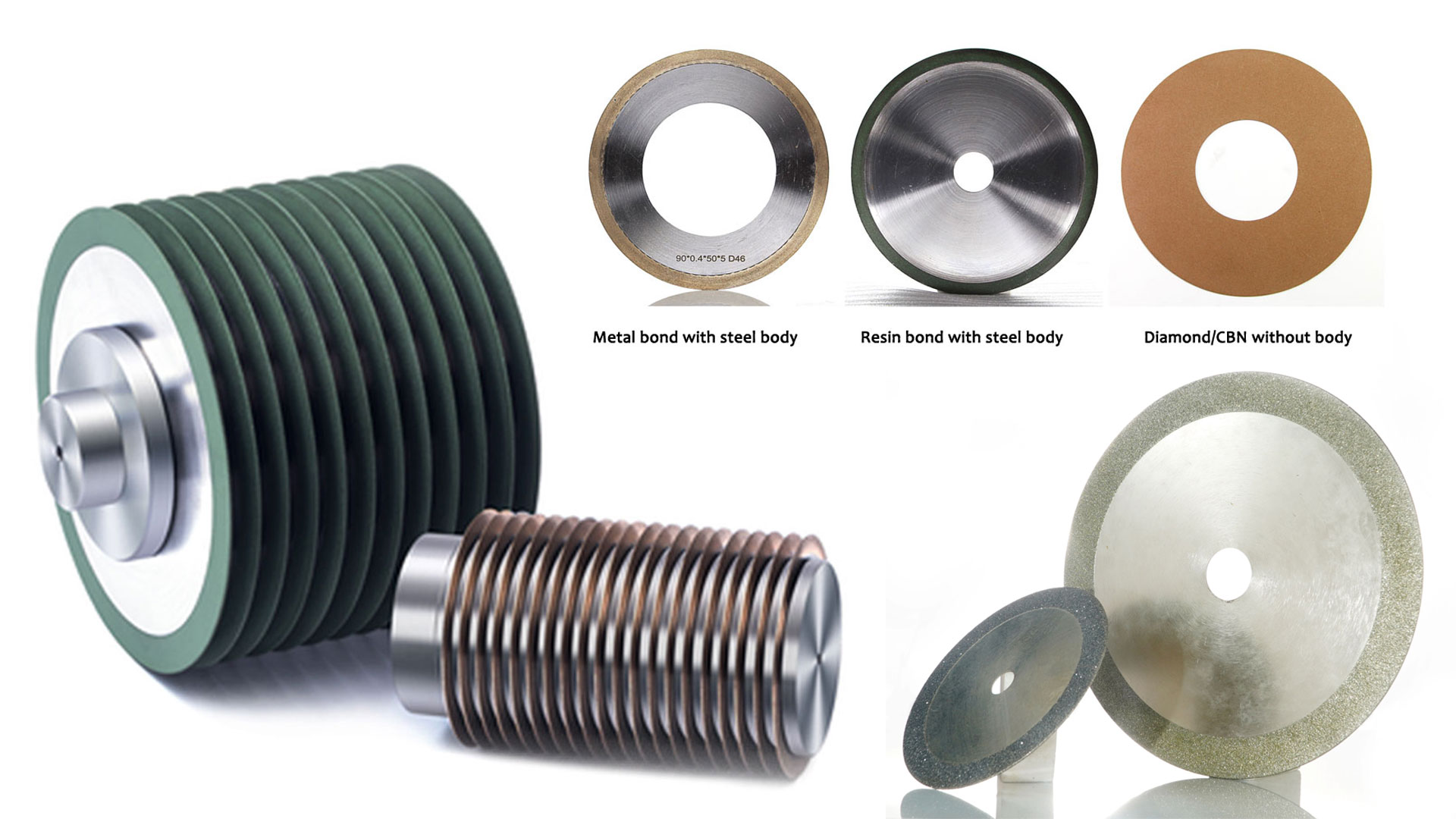
Properties and Composition of Diamond Cutting Wheel
Diamond’s inherent hardness makes it the perfect choice for a cutting wheel. Thus, it's designed to handle tough materials. Moreover, these wheels include industrial-grade diamonds fixed in various bonding materials. As a result, they enhance their durability and cutting capabilities.
Applications of Diamond Cutting Wheel
A diamond cutting wheel is useful for cutting materials such as ceramics, glass, and stone. They can make clean and precise cuts. Hence, it makes them valuable in construction, manufacturing, and artistic applications.
Advantages of Diamond Cutting Wheel
- High-Cutting Efficiency. They cut through hard materials in a quick and effective way.
- Durability. These wheels have a long life span, making them cost-effective over time.
- Precise Cuts. They also provide clean and accurate cuts. As a result, it reduces material wastage and enhances the quality of the final product.
Choosing a diamond cutting wheel ensures superior performance and longevity. Hence, it provides reliable results and value for demanding cutting applications.
Bond Types of Diamond Cutting Wheel
Understanding bond types in a diamond cutting wheel is important. Here are some bond types of diamond wheels.
Metal Bond Diamond Cutting Wheel
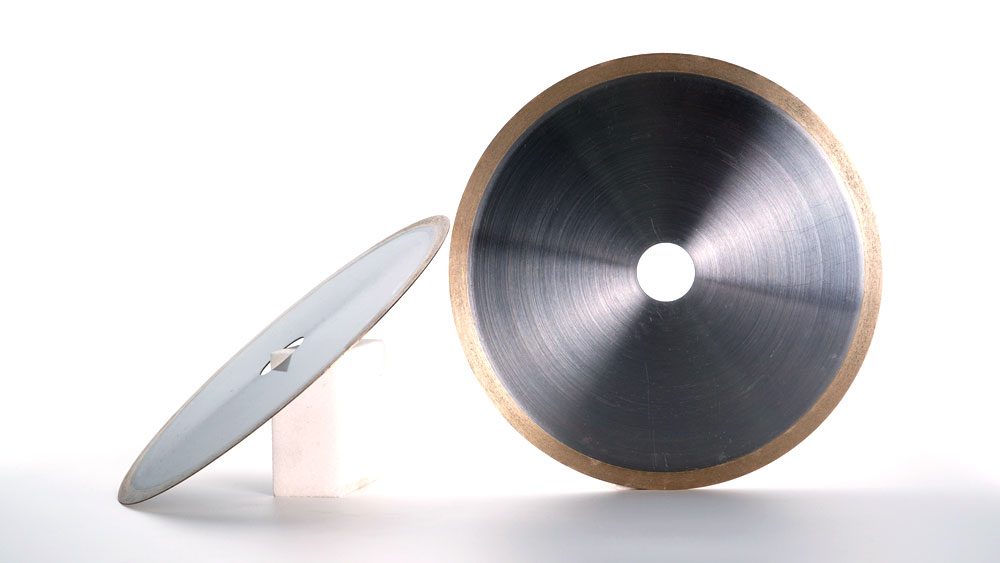
- Ideal For. This wheel is designed for cutting tasks and applications. If you’re dealing with tough materials, this wheel exceeds the demanding performance. Moreover, it’s a crucial tool for reliable performance in cutting operations.
- Features. Built for durability, this wheel displays high wear resistance and diamond bonding technology. Its design promotes smooth and accurate cuts, ideal for precision-focused industrial applications. Robust features make it perfect for tasks demanding strength and precision.
Resin Bond Diamond Cutting Wheel
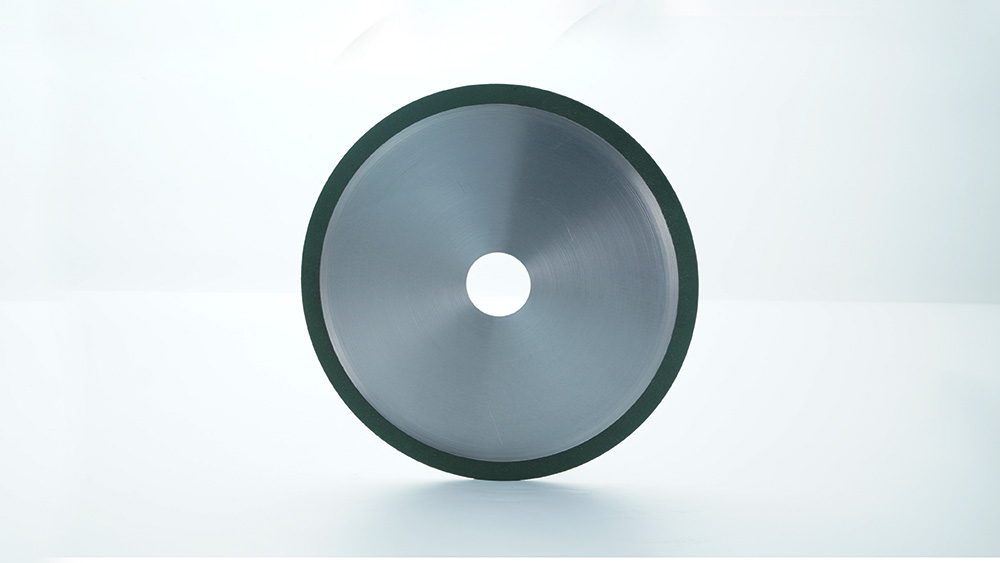
- Ideal For. This cutting wheel is designed for cutting non-metallic materials. Thus, it delivers exceptionally smooth finishes. It also excels in applications where precision and fine surface finish are crucial. Hence, it's perfect for materials such as ceramics, glass, etc.
- Features. The resin bond diamond wheel balances wheel speed and quality with its unique bonding materials. Its embedded diamond particles ensure a sharp and long-lasting edge. Thus, it's ideal for complex tasks where material integrity and smoothness are important.
Electroplated Diamond Cutting Wheel
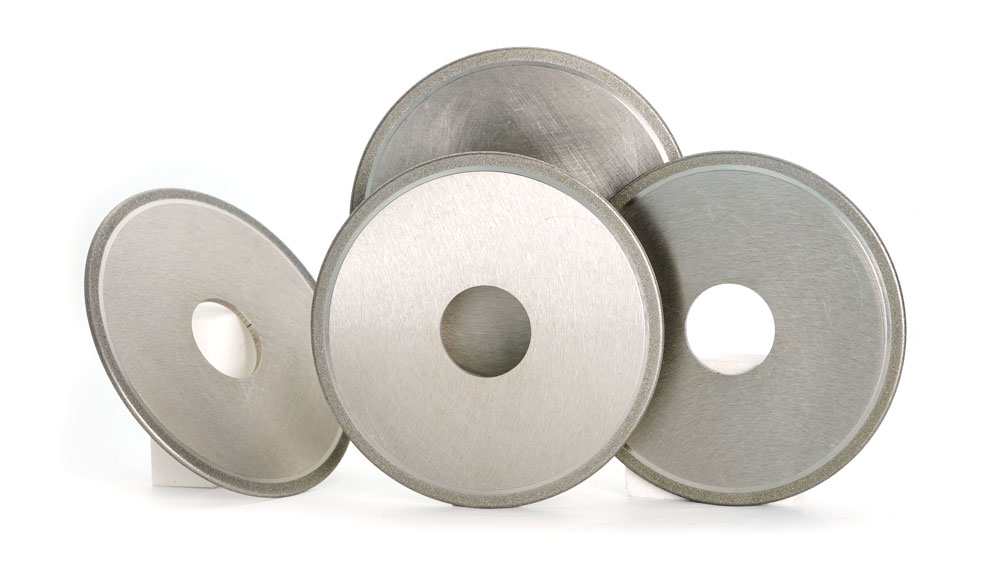
- Ideal For. This cutting wheel is perfect for less demanding applications where high cutting speed is a priority. It excels in tasks that don’t require extensive durability and longevity of more robust tools. However, it still demands efficiency and precision.
- Features. It features a single layer of diamond grit and delivers rapid, precise cuts ideal for simple tasks. The diamond layer ensures clean and efficient cutting. Hence, it's perfect for applications requiring quick results with prolonged life. It's also ideal for functions that need fast performance on less demanding materials.
Understanding the properties and applications of these wheels in selecting the right type. Keep reading this blog post to learn about the CBN cutting wheels.
2. CBN Cutting Wheels
A CBN (Cubic Boron Nitride) cutting is a special tool that is useful for cutting and grinding metals. CBN is a man-made material that is hard, almost as hard as diamond. It's well-known for being able to handle high temperatures without breaking down.
Properties and Compositions of CBN Cutting Wheel
The CBN Wheel is characterised by its exceptional hardness and thermal stability. Unlike regular abrasives, CBN can handle high temperatures. Also, it will not lose its ability to cut the materials. Thus, it's a perfect wheel for jobs that involve a lot of heat.
Applications of Cutting Wheel
A CBN wheel is great for cutting strong metals, like hardened steel. These wheels are often used in industries like aerospace, automotive, and tool manufacturing. The reason is that they need to be precise and long-lasting.
Advantages of Using Cutting Wheel
The key advantages of CBN Cutting Wheel includes heat resistance, sharpness, and minimal thermal damage. Go through this section to know more about them.
- Superior Heat Resistance. CBN wheels maintain their sharpness even at high temperatures. As such, it lowers the chance of the workpiece suffering thermal damage.
- Long-Lasting Sharpness. They keep their cutting edge for longer periods. Hence, it ensures consistent performance and reduces downtime for wheel replacement.
- Minimal Thermal Damage. The high thermal stability of CBN minimizes the risk of overheating. Therefore, it preserves the integrity of the workpiece.
Choosing the right Cutting Wheel enhances performance and durability. As a result, it saves time and cost while achieving high-quality and precise cuts.
Different Bond Types of CBN Cutting Wheel
There are three primary bond types for a CBN Cutting Wheel. So, go through this section to understand these bond types.
A Metal Bond CBN Wheel
- Ideal For. Heavy-duty cutting tasks need high precision.
- Features. This wheel has high durability and wear resistance. Hence, it is suitable for industrial applications where long-term performance is critical.
A Resin Bond CBN Wheel
- Ideal For. Less demanding applications requiring smoother cuts.
- Features. It provides a good balance of cutting efficiency and surface finish quality. As a result, it's suitable for tasks that do not need extreme durability.
An Electroplated CBN Wheel
- Ideal For. Specific high-speed applications need quick cutting.
- Features. This wheel has a single layer of CBN grit bonded to the wheel surface. Thus, it offers high cutting speed and efficiency for specialised tasks.
Understanding these properties and applications helps in selecting the appropriate CBN wheel. Also, it helps with various specific cutting requirements. Moreover, it ensures optimal performance and tool longevity.
3. Brazed Diamond Cutting Wheel

A Brazed Diamond Cutting Wheel is a cutting tool that uses diamond particles brazed onto a metal surface. Thus, it provides a superior cutting performance for various materials. So, read this section to learn more about its types and advantages.
Types of Brazed Diamond Cutting Wheel
- Continuous Rim. This wheel is best for cutting hard materials like ceramics and glass.
- Segmented Rim. It is suitable for cutting concrete, bricks, and stones due to its ability to eliminate heat.
- Turbo Rim. It combines the benefits of continuous and segmented rims. Hence, it provides fast cutting with smooth finishes.
Advantages of Using Brazed Diamond Cutting Wheel:
- Long Lifespan. This tool offers extended use due to the durability of diamond particles.
- Precision Cutting. It also provides clean and precise cuts, minimizing material wastage.
- High Efficiency. This tool further ensures faster cutting speeds and increased productivity.
Overall, Brazed Diamond Cutting Wheel is an important tool in construction and manufacturing. Moreover, it is known for its efficiency, precision, and durability.
Factors To Consider When Choosing a Cutting Wheel
When choosing a cutting wheel, it’s suitable for industrial applications. Here, long-term performance is critical. So, go through this section to learn about those factors.
- Materials To Be Cut. The type of material dictates the wheel selection. For example, diamond wheels are ideal for hard materials like ceramics and glass. Yet, the CBN (Cubic Boron Nitride) wheel is suited for ferrous materials and hardened steel.
- Cutting Speed and Efficiency. The bond type of the wheel impacts cutting speed and efficiency. Metal bond wheels offer high durability and precision for demanding tasks. Yet, resin bond wheels provide smoother cuts for less demanding applications. Electroplated wheels offer high cutting speed for specific tasks.
- Durability and Lifespan. Consider the longevity and frequency of replacement when choosing a Cutting Wheel. Durable wheels, such as metal bond types, may have a higher initial cost. But it offers long-term savings due to less frequent replacements.
- Surface Finish Requirements. The desired surface finish also influences the choice of wheel. Resin bond wheels are suitable for applications requiring a smoother finish. Instead, metal bond wheels are better for tasks needing high precision and durability.
By considering these factors, you can select the most suitable wheel for your needs. As a result, these wheels will ensure optimal performance, efficiency, and cost-effectiveness.
Conclusion
When picking a cutting wheel, you need to think about a few things. They include material speed, efficiency, durability, and surface finish. Ensure to match the wheel to the material you’re working with and pick the right type of bond. Moreover, you will also need to choose a wheel that will last. By making these choices, you’ll get better results, cut more efficiently, and save money in the long run.

